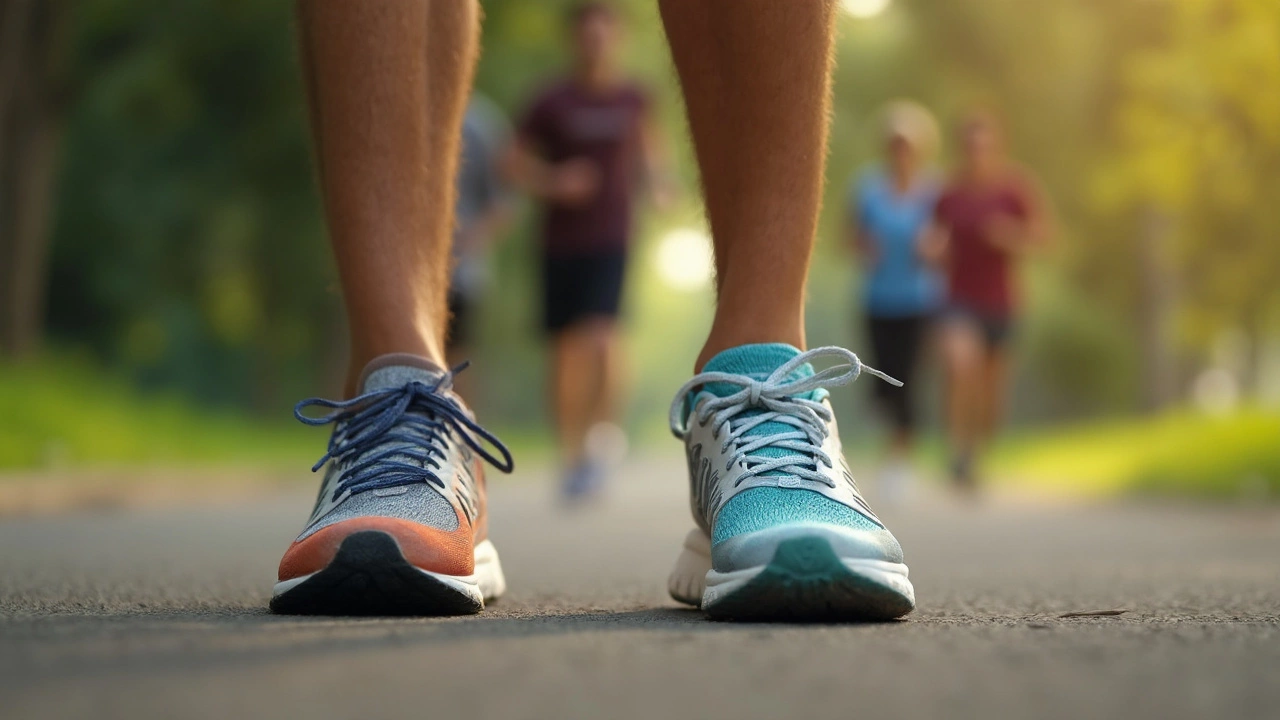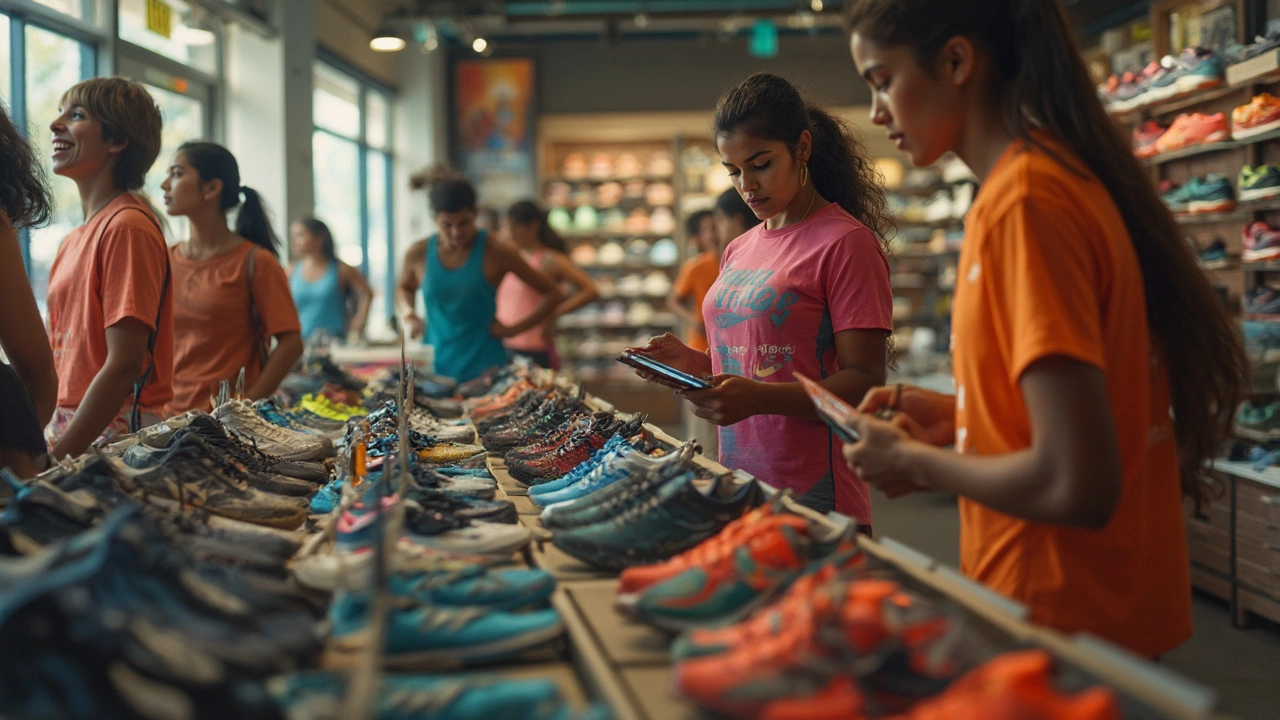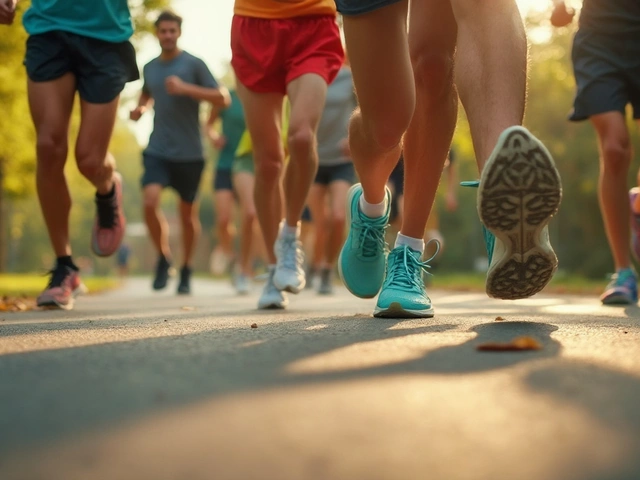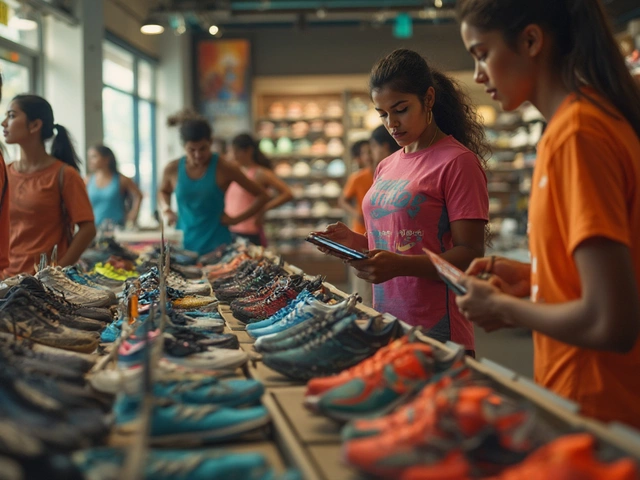Your feet do a lot of work when you run. Throw them into the wrong shoes, and you’ll feel it—sometimes in places you didn’t expect, like your knees or back. Good running shoes aren’t just about style or brand; the real deal is support, cushioning, and how they fit your unique foot shape.
There’s no one-size-fits-all answer, but here’s the short version: most true running shoes—like those from Brooks, Asics, or Nike's running lines—will keep your feet way happier than your average sneakers or, please no, those worn-out old Vans from college. Why? Running puts a ton of impact through your legs, and specialized running shoes are made to absorb that shock and guide your foot the way it wants to move.
Think about the surfaces you run on, how often you run, even your running style. These details actually matter when picking out a shoe. Just grabbing any comfortable sneaker from your closet might cut it for a quick jog, but if you run weekly or set big goals, investing in real running shoes is like giving your feet a high-five.
- Why Shoe Choice Matters More Than You Think
- The Hallmarks of a Good Running Shoe
- What Shoes to Avoid When Running
- Everyday Shoes Are Sometimes Okay—But When?
- Finding Your Perfect Running Shoe Match
Why Shoe Choice Matters More Than You Think
Here’s something people usually miss: the shoes you pick for running can mean the difference between loving your runs and dealing with pain (or even weird injuries). When you run, your body absorbs a force up to three times your body weight with every step. Shoes that don't support you properly just can’t keep up with that daily pounding.
When you wear shoes made for running, you’re helping your feet, ankles, knees, and even your hips line up the right way. That means less chance of running shoes related injuries like shin splints or joint pain. Over 70% of regular runners get hurt every year—most often because of bad shoes or old, worn-out pairs.
Check out the numbers for injuries linked to shoe choice:
| Type of Injury | % Linked to Wrong Footwear |
|---|---|
| Shin splints | 50% |
| Heel pain | 37% |
| Knee pain | 28% |
This isn’t about scaring you—it’s about helping you skip the mistakes most new runners make. You wouldn’t drive a car with flat tires, right? The same logic works for your running shoes. If they’re too old, not cushioned enough, or not made for running, you’re asking for trouble.
The best part? Good shoes can make running feel easier. They cushion your step, roll your foot forward smoothly, and some even give you a bit of extra energy with every push-off. So yep, shoe choice is a way bigger deal than people think. Treat your feet right and running gets way more fun—and a lot less risky.
The Hallmarks of a Good Running Shoe
Let’s get real—just because a shoe says it’s for running doesn’t always mean it’s a winner. A good running shoe should have your back (well, your feet), and you can actually spot the must-have features before dropping any cash.
First up, cushioning. Your running shoes need to soften all that pounding on pavement or trails. Most brands use foam midsoles so your joints get some relief. Popular choices like Brooks Ghost, Asics Gel-Nimbus, and Nike Pegasus all have midsoles designed for shock absorption without turning you into a marshmallow.
Next, check out the support. Some folks have feet that roll inward (called overpronation), while others stay neutral. Shoe stores actually check this in their gait analysis. A proper running shoe will either keep your foot in a healthy position or let it move just enough, depending on your arch and how your foot lands. If you’ve got flat feet, look for ‘stability’ shoes. If you’re neutral, ‘cushion’ or ‘neutral’ shoes usually work best.
- running shoes that fit right should feel snug around the heel, roomy in the toe box, and locked in at the midfoot.
- The heel-to-toe drop (the height difference from the heel to the forefoot) matters too. Most running shoes are in the 8 to 12 mm range, which works for most runners.
- Outsole grip: If you’re running outside, make sure the bottom of your shoes can handle wet roads or gravel.
- Breathable upper: If your feet turn into sweat factories, mesh uppers help keep things cool and light.
Take a look at this quick peek into what sets running shoes apart from everyday sneakers:
| Feature | Good Running Shoe | Casual Sneaker |
|---|---|---|
| Cushioning | Specialized foam for shock absorption | Minimal or basic padding |
| Support | Stability or neutral support, tailored gait | Generic flat base |
| Weight | Light—usually under 300g (10.5oz) | Heavier, bulkier |
| Breathability | Mesh or engineered knit | Leather or thick fabric |
| Outsole | Grip for running surfaces | Smooth, basic rubber or plastic |
An interesting bit: according to a recent survey by Runner’s World, almost 80% of runners said the right fit was even more important than the brand. Your feet know what feels good—don’t settle for anything less. Try shoes on at the end of the day (your feet swell up as the day goes on) and use the socks you’d wear while running. Wiggle those toes. Comfort is king.

What Shoes to Avoid When Running
Picking the wrong shoes can sideline you fast. A lot of people just grab any old pair from their closet, but certain shoes can actually do more harm than good. Here’s the lowdown on what to skip if you care about your feet, knees, and staying injury-free.
- Everyday sneakers: Most fashion sneakers don’t have the right cushioning or support for running. Their soles might look soft, but they compress way too quickly. If you’re running more than just to catch the bus, avoid these.
- Old shoes: If your running shoes have clocked over 500 miles, they’ve likely lost their shock-absorbing powers. You’ll start to feel it in your joints. Experts suggest replacing your main running shoes every 300–500 miles, or about every 6–12 months for regular runners.
- Chuck Taylors & flat-soled shoes: Converse, Vans, and similar flat-bottom shoes barely have any arch support. They’re basically plimsolls with attitude, not running gear. Wear these and you’ll risk blisters, shin splints, or worse.
- Walking shoes: These might feel comfy at first, but they’re designed for a different kind of movement—slower, more stable. Running puts much more force behind each stride.
- Minimalist shoes (for beginners): Barefoot-style or super-thin shoes have a place, but they demand a strong, trained foot. For beginners, these mean sore calves, and often, injuries. Unless you’re already used to them, best to steer clear.
- Sandals and flip-flops: Pretty obvious, but worth repeating. Zero support, high risk for slips, and you’ll probably trip a few times for good measure.
Just to make it easy, here’s a quick comparison:
| Shoe Type | Support | Cushioning | Injury Risk (High/Med/Low) |
|---|---|---|---|
| Running Shoes | Good | Good | Low |
| Old Running Shoes | Poor | Poor | High |
| Fashion Sneakers | Poor | Low | High |
| Flat Shoes (Vans, Converse) | Very Poor | Very Low | High |
| Minimalist Shoes | Variable | Very Low | High (for beginners) |
| Sandals/Flip-flops | None | None | Very High |
If you stick with running shoes actually made for running, you’ll give yourself a much better shot at enjoying every stride. Ditch the options above unless you want your next finish line to be your couch after a week of nursing sore ankles.
Everyday Shoes Are Sometimes Okay—But When?
Sometimes you just want to go for a quick run and your actual running shoes are missing, or maybe you’re stuck out and only have your regular sneakers on hand. So, are everyday shoes ever good enough for a run? In short, for very short distances, quick sprints, or emergency jogs, some everyday shoes can handle the job—but there are a few things to keep in mind.
Here’s when it might be okay to wear non-running shoes:
- If you’re only running less than a mile and not pushing for speed.
- The shoes have decent cushioning and aren’t totally flat.
- The soles aren’t worn out or uneven.
- Your route is smooth—think treadmill, track, or a flat sidewalk (not trails or rocky roads).
But even then, don’t make it a habit. Casual shoes like Converse, Vans, or dress sneakers just don’t cut it for running shoes standards. Studies from universities like Drexel show that using unsupportive shoes can increase risk of injury by up to 33% for regular runners.
Take a look at this quick comparison to see the key differences between running shoes and everyday shoes:
| Feature | Running Shoes | Everyday Shoes |
|---|---|---|
| Cushioning | High, designed for impact | Varies, often minimal |
| Support | Specifically built for forward motion | Usually just for standing/walking |
| Durability (for running) | 350-500 miles | Wears quickly under impact |
| Injury Risk (long-term use for running) | Low | Increased |
Bottom line? Use everyday shoes for running only if you have no other choice and your distance is really short. If you’re starting to jog even semi-regularly, save your feet and joints by picking up a pair of actual running shoes—it’s totally worth it in the long run.

Finding Your Perfect Running Shoe Match
This is where a lot of runners get stuck—standing in the shoe aisle, looking at a wall of options, and totally confused. The thing is, your perfect shoe might not be the same as your friend’s, and that's normal. Here’s how to actually figure it out for yourself, minus the guesswork.
The very first thing you want to check? Fit. It sounds basic, but so many people run in shoes that are too small, too roomy, or just the wrong shape for their foot. You should have at least a thumb’s width of space between your longest toe and the end of the shoe. Don’t freak out if you need a half size bigger than your regular daily sneakers; that’s totally normal with running shoes.
Then, think about your running style. Do you land mostly on your heels, midfoot, or toes? Some shoe models are built for certain strike patterns. For example, if you land on your heel, shoes with more cushioning in the back will help soften the impact. A running store can often do a quick gait analysis—sometimes for free—and point you to shoes that match your stride.
Don’t ignore what you run on, either. Trail shoes have grippier soles and protect your feet from rocks. Road shoes are lighter and focus more on smooth rides for pavement. There are also hybrid choices if you mix it up.
- Shop for shoes in the afternoon—your feet swell as the day goes on, just like during a run.
- Wear the kind of socks you'll run in, so you know how the shoes actually fit.
- Test the shoes in-store. Most good stores let you jog around, even inside, to get a feel.
It’s tempting to go for whatever’s trending, but ignore Instagram and go with what feels best. That comfy shoe you love now could mean way less soreness (and way more miles) later.
Here’s a quick table to compare some popular brands and what each is known for:
| Brand | Main Features | Good For |
|---|---|---|
| Brooks | Reliable cushioning, wide toe box | Daily runs, beginners |
| Nike | Lightweight, responsive foam | Speed, racing |
| Asics | Stable heel, solid arch support | Distance, all-around |
| Hoka | Thick cushioning, minimal drop | Long mileage, joint comfort |
| Altra | Zero drop, foot-shaped toe box | Natural feel, toe splay |
Remember, running stores don’t just want a sale—they want you to keep running, injury-free. Use their expertise. And don’t forget, running shoes aren’t a lifetime investment. Swap them out every 300–500 miles—your feet and knees will thank you for it.





